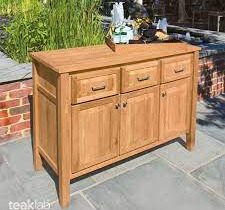Are you worried you’re not getting the right level of performance from your HVAC supply? Or have you spotted some rust on your ductwork, and you’re concerned it needs fixing? Whether you’re looking to replace old tubing with something longer-lasting or planning a brand-new installation, it’s important to know the different types of tubing available. Using the information below, you can discover the perfect material for your system.
The Different Types of Tubing
Tubing for HVAC systems breaks down into two main categories: metal ductwork and flex ductwork.
Metal tubing is a more permanent solution and requires the right HVAC tools to install correctly. Due to the nature of the material, it has to be incorporated into the building’s architecture and design. Once installed, it will last a long time, and it can add a sleek charm to the building’s atmosphere.
Flex ductwork is made out of a flexible material, like rubber or silicone. This allows the tubing to adapt to any type of interior, and it can be altered easily. It isn’t quite as durable as metal tubing, but it is typically cheaper and more appropriate for small spaces.
As you can expect, there are pros and cons for each type of tubing. There are also different materials used for metal tubing and flex tubing. Before choosing one or the other, understand the choices available to you.
A Breakdown of Metal Tubing
The most common metal tubing materials are copper, aluminum, and steel.
The advantage of metal tubing is durability. The metal is usually treated to resist corrosion, so it’s perfect for underground ductwork. It can also withstand extreme temperatures better than flex tubing.
The disadvantage of metal ductwork is the price. Steel tubing is the priciest, followed by copper and then aluminum. In recent years, the price of copper has gone up, which has allowed aluminum to pass it in value.
Aluminum can last even longer than copper, and it’s cheaper, but making repairs to aluminum tubing is difficult. Copper, in comparison, is easier to repair and maintain. Copper is the most common material used in HVAC systems for this reason.
Steel is better for large pipes, like the kind you’d see in a commercial building. It allows for extremely hot or cold temperatures and a range of pressures. Galvanized steel tubing is the most durable material of the three but also the priciest.
Stainless steel tubing is aesthetically pleasing, whether it is round and ovular or square and rectangular. It can be used visibly in wide, open areas to great effect. You can find more info here on stainless steel tubing.
A Look at Flexible Tubing
The most common flexible tubing materials are plastic, rubber, polyurethane, and silicone.
Plastic’s main appeal is its versatility. However, it can’t be fitted with metal pieces or parts, which detracts from that versatility. When it comes to maintaining air environments, plastic can’t be beaten, but silicone is a close second.
Polyurethane and rubber are resistant to heat, and they tend to offer the best abrasive resistance. Both are easy and fast to install.
While silicone is a good option, it doesn’t hold up under extreme weather conditions when compared to the others. For this reason, homes located in areas with high or low temperatures should stay clear.
Similar to treated metal ductwork, plastic tubing is great for use underground, because it is resistant to corrosion. It can carry cold air all day long, and it is very light. But prices can get steep, especially for a larger home.
In terms of aesthetic appearance, flex ductwork isn’t the most appealing to look at. Because of this, it is usually hidden within the walls or covered by insulation. That said, it tends to be the best option for homeowners and is commonly used for residential buildings.
What’s the Best for Your House?
Choosing the right tubing for your home HVAC system comes down to personal preference. The primary factors to consider are price and durability.
If you want tubing that will last for a long time, metal tubing is the way to go. Copper is cheaper, but it will likely degrade sooner than aluminum and steel tubing.
Climate conditions also affect durability. If you live in a climate with extreme temperatures, you will need stronger materials that can handle the load without degrading. If you live in a mild locale, you won’t need to splurge to get the highest end material.
You should also consider the size of your building and the number of occupants living there. The bigger the house, the higher the cost. The more residents who live there, the harder your system will have to work to cool or heat the building.
Metal ductwork should be looked at as a long-term investment. It’s going to cost a lot upfront, and it will likely require the help of a professional. A professional can tackle the design and measurement for optimum airflow, and they can take care of the installation, which can be a bit more dangerous when working with metal.
Flex ductwork is more manageable from a homeowner’s perspective and is usually more appropriate for residential buildings. It’s suited for smaller systems, but it may come with more repair needs.
If you aren’t sure what material to go with after all this, ask a professional, and get a quote. HVAC contractors will have years of experience that will help them make the perfect choice for your home.
Home Improvement Shouldn’t Stop at Repairs
With this information on the best tubing for repairs, you’re well equipped to fix your HVAC system and go back to living the cool life. No more heatwaves for you!
If you don’t have experience repairing tubing on your own, it may be best to seek out a professional HVAC service. They will have the tools and expertise to help you.
But home improvement shouldn’t stop at simple repairs. There are a variety of easy ways to enhance your quality of life at home. If you’re looking for more tips and tricks, check out the home improvement category on our blog.















Leave a Reply